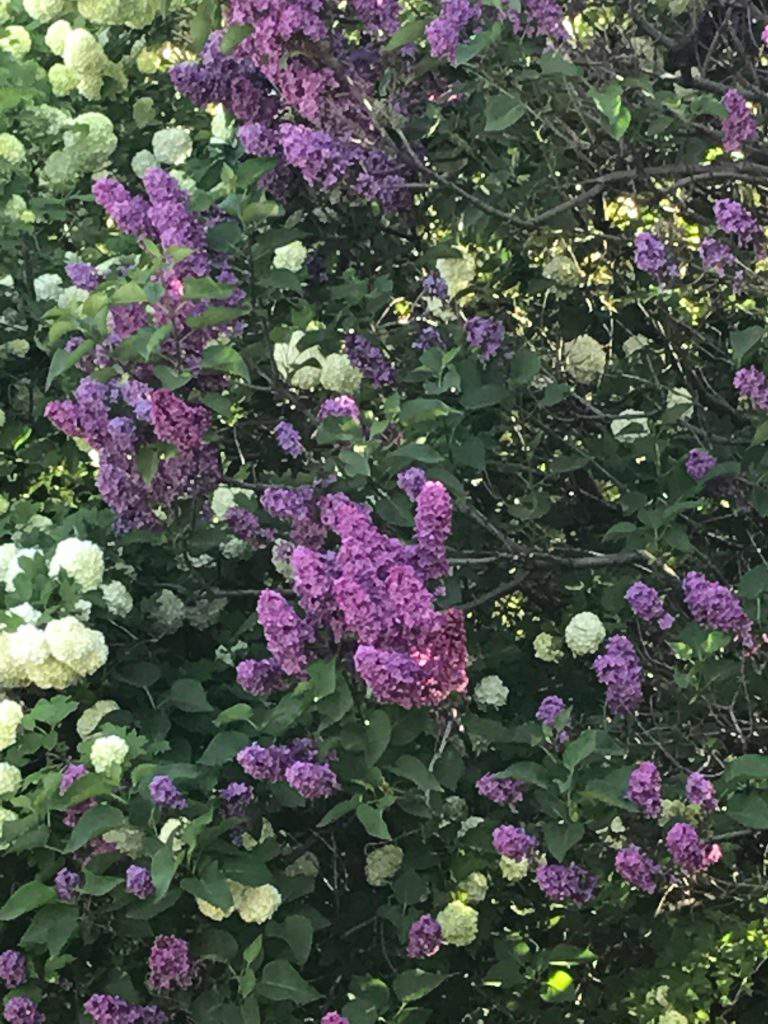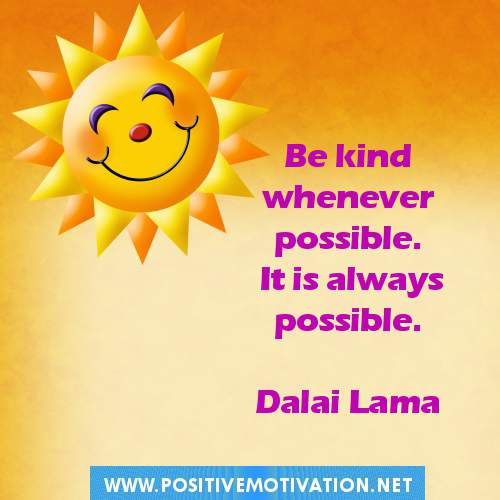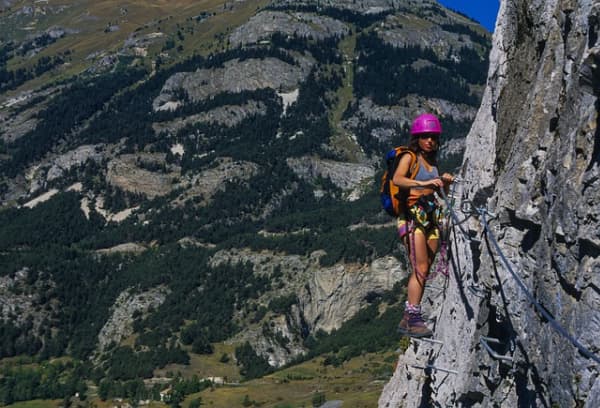What is mindfulness and why should you care?
What is mindfulness?
There is a lot of talk about mindfulness lately and several different definitions. Some of it may feel a little too hippyish or new-agey for some of you. But simply put, mindfulness is being aware of your thoughts, feelings, and sensations in the present moment, without judging them as good or bad.
Why should you care?
To answer that question, let’s break mindfulness down into its three main components: thoughts, feelings, and sensations.
Thoughts
Much of our suffering is self-imposed by our thoughts about what is happening or what we are feeling. For example, I have a cold on race day. Assuming I’ve taken good care of myself, suffering cold symptoms is beyond my control, but I compound my suffering by my thinking: “This isn’t fair. I’ve been training for eight weeks for this day, and now I don’t feel well and won’t do my best. It’s all a waste of time. My life sucks.” Etc. etc. You get the idea.
These thoughts are bound to pop into my head, but I don’t have to engage them. I can turn things around by following these three steps:
- Recognize that these are thoughts, and thoughts are not facts.
- Relax my body with a couple of deep breaths. Imagine releasing the negative thoughts with each breath.
- Replace the negative thought with at least one positive. In the earlier example, I could think, “This is disappointing, but I’ll just run a little slower and enjoy the scenery. That eight weeks of training did my body and mind a lot of good, so it wasn’t wasted.”
Feelings
Being alive means experiencing feelings—some pleasant, some unpleasant. Part of the mindfulness definition is awareness without judgment. We humans have a tendency to label these unpleasant feelings as bad, to think that we should always try to be happy. When the challenging emotions arise, we turn away from them, suppress them, or try to shake them off. We have developed a myriad of ways to distract ourselves—busyness, food, drink, drugs, electronic devices—but doing so keeps us from experiencing life to its fullest and learning the lessons that suffering has to teach us, not to mention the additional suffering that many of these distractions create.
So what can we do instead? As counterintuitive as it may seem, instead of turning away from an unpleasant feeling, turn toward it:
- Acknowledge the emotion and name it. I feel sad.
- If you can, look at the feeling with loving curiosity. What are the physical sensations of being sad? Create a mental space around the emotion. You are not the sadness. You are so much more than that.
- Remember that all emotions are impermanent. They rise; they stay for awhile; and then they recede. Much like waves. Be patient, ride the wave.
- In the meantime, ask yourself what you need. What kind of self-care is appropriate for the current situation? Depending on the specifics of your situation, you may want to investigate what caused your suffering and whether further action is needed to change your situation or protect yourself from further harm.
Sensations
You may think awareness of your body’s sensations is a given, but how often do you suddenly realize you’ve been clenching your teeth or sitting hunched over your computer without realizing your shoulders were gradually pulling forward? Even eating. Have you ever eaten lunch at your desk or dinner in front of the television and reached the bottom of the dish without ever really enjoying the food?
If you’re like me, you spend a lot of time in your head, thinking, planning, remembering. Once in a while, it’s a good idea to get out of your head and check in with the rest of your body. We can only fully experience life through physical sensation—sight, sound, taste, smell, touch. When we take our attention to our bodies, we are in the here and now.
Take a minute right now:
- Take a deep, slow breath. Inhale through your nose. Feel the air pass through your nostrils and into your chest. Exhale through your mouth. Feel the air pass through your throat and over your lips.
- As you continue to breath slowly, scan your body. What sensations do you feel in your head, your face, your neck, your shoulders, your arms and hands? What sensations do you feel in your chest, your back, your abdomen, your legs, and feet? What is the temperature? Is there tingling? Where are there pressure points? Any discomfort? Any pleasant sensations?
- Expand your awareness to your surroundings. What can you hear? What do you smell? What do you see?
If you’re looking for a regular reminder to practice mindfulness of sensation, eating is a great time to check in with your body. What does the food look like? How does it smell? What is the consistency on your tongue? How does it taste? How does your body feel? Are you still hungry or have you reached a point of physical satisfaction?
Embrace mindfulness
To be mindful is to live fully, richly, and deeply. It’s also a work in progress. None of us is mindful all of the time. As I like to say, I am fully aware that I am not fully aware.
Your turn
- What is one way you practice mindfulness?
- What is your favorite distraction?
- Which of your senses is strongest or most important to you?
- What was the last thing you ate or drank?
This post linked to the Grand Social.









Great post. I do think the idea of mindfulness is great. We often get caught up in our thoughts and feelings, and it’s important to step back and just BE instead of judging ourselves or getting overly frustrated.
-Lauren
Thanks for sharing your thoughts on the subject, Lauren. I’m definitely one that overthinks things. I’ve been focusing of late and grounding myself in the moment.
I have been reading a lot about mindfulness lately. It does seem to be kind of new agey but it is something I need to be practicing. It scares me somewhat when my mind goes to places I don’t want it to so I shy away from those places. I need to be more mindful.
Yes, there’s something to be said for acknowledging our thoughts and questioning them. I have to remind myself frequently that thoughts are not necessarily facts.
This is an excellent and timely post for me Christie and I have been struggling through the Mindful in May Challenge. You have succinctly put into words exactly what mindfulness is and the benefits. The challenge has been good but information overload so for the last two weeks I’m just doing the meditation and nothing more. I too had the race experience. Last year I had been training for a 34km run and was doing so well. I came down with pleurisy a week before the event and although I went I could only manage 25km. I was annoyed and negative, disappointed at first as it was supposed to kick off my 60th birthday celebrations. Then I realised as you did, that my body was feeling good from all the training and at least I had given it a shot. I’m trying again this year so fingers crossed. Thanks so much for sharing with us at Midlife Share the Love Party and have a beautiful day xx #MLSTL
Thank you for the kind words Sue. Once again, I feel like I have a kindred spirit in you. Good luck with this year’s run!
Hi Christie I just saw your reply and yes I believe we are kindred spirits. Hopefully I can achieve the run but I’ll be trying which is the main thing. Thanks for co-hosting and linking up this post at #BloggingGrandmothersLinkParty. Sharing on social media. xx
Thanks for sharing Sue and good luck on the run!
Gosh, Christie, with the exception of your being in waaaayyyyy better shape than me, sometimes it seems we’re so alike it’s scary. I started paying attention to mindfulness when I first started practicing yoga. My practice completely changed the way I approach life. Paying attention to breathing, noticing, feelings and awareness slowly changes you from the inside out. As for your questions, 1) Yoga, 2) The sounds of nature – birds, water running, leaves rustling, etc. 3) Smell – I can smell an onion from 500 paces! But it also serves me well when the sent is distant irises and rain, and 4) I’m currently nursing a delicious cup of coffee – even if it is late in the afternoon! ~ Lynn
My feelings precisely, Lynn. You said it perfectly–mindfulness changes you from the inside out. I would love to have a cup of coffee with you one day. If we’re lucky, it will be raining!
Christie, While it might be new-agey and the latest trendy word, I have found that being more aware of my thoughts is so helpful. Being aware when I start doing the compare & despair, or the negative inner voice of “you can’t do that”, or stopping when I mindlessly reach for a snack and ask what am I really in need of? I end up in a better place every time just by becoming more aware…more mindful.
There’s lots of research that becoming aware of and naming your negative emotion can help minimize the negativity. I’ve personally created a list of over 30 emotional terms to help me figure out how I am really feeling. I often use it to drive awareness and then follow it with some positive thinking … gratitudes or affirmations. It has made me a much more positive person in general.
Wow, Pat. You just put the somewhat airy concept of mindfulness into practical steps that real people can incorporate into their messy lives. Thank you for that.
I practice mindfullness on my daily walks. I’m often very much in the moment, noticing nature around me. The last thing I ate was a particularly nice salmon linguine last night, with a nice glass of sauvignon blanc. About to have a cup of tea which now having read your post I shall cherish every mouthful of!
That sounds lovely, Jo–all of it–the nature walks, the salmon linguine and wine, and a cup of tea. I hope you savored it all. Thanks for sharing.
Hi Christie,
I’ve read lots of books about mindfulness, but especially appreciate your succinct and clear definition. Great idea to divide it into the three aspects of thoughts, feelings and sensations.
In answer to your questions: I practice mindfulness when walking in the woods with my dogs. It’s a great place for sensations and feelings, both of which I have a lot more difficulty reaching than thoughts.
Food is a distraction for me and so is computer work.
My strongest sense is visual – both words and images.
The last thing I ate or drank- right now and it’s peppermint tea. I’m aware of the warmth of it in my mouth.
Christie, on an entirely separate note, could you tell me what plugin you are using to give people the option of receiving just responses to their own comments? Is it Subscribe to Comments Reloaded? Are you happy with it? Thanks.
Im surprised by how much pleasure I’ve gotten from reading about other people’s mindfulness exercises. I can visualize walking with you and your dogs in the woods. Food is a great distraction, isn’t it? That’s one reason I’ve been practicing mindful eating.
Regarding the plugin, I am using Subscribe to Comments Reloaded. I just installed it today, but so far I like it.
Very timely post for me because like Sue I’m doing Mindful in May. You’ve described what Mindfulness is very well! I’m enjoying being mindful each day through meditation but I try to be finding at other times too. You can practice being mindful while eating, while washing up, while in the shower, while gardening, while walking, any time really and it does make a big difference to your state of mind to be more conscious of the present. Sounds a bit woo woo to a lot of people but its actually a really beneficial practice, particularly in this day and age where we are switched on and connected via social media far too much, so have such busy, overloaded minds!
This is so true. You can be mindful at any time, no matter what you’re doing. For awhile, I was using washing my hands as a trigger to check in with myself and practice mindfulness. I need to get back to doing that. Have a lovely, mindful day!
Great post Christie. It does seem that mindfulness is everywhere at the moment so it has been in my mind lately. Usually I tell myself that I don’t have time to stop and be mindful. I think I tend to connect mindfulness with meditation. But your post has made me stop and think and realise that I do practice mindfulness. On my walks or hikes, I’m definitely mindful of my surroundings and give a lot of thought to whatever is going on in my life at the time. Shared on SM #MLSTL
You’re right Jennifer, meditation certainly supports mindfulness, but it isn’t the only way. I always find being in nature improves mindfulness, and for some reason, that is especially true when walking or hiking.
Hi, Christie – I agree that ‘Mindfulness’ is a work in progress. I love your quote, “I am fully aware that I am not fully aware.” I will definitely be borrowing that!
Feel free Donna! 🙂
There seems to be a real Mindfulness Revolution going on atm Christie – I know Sue and Min have been doing Mindful May – and your post now adds into the mix. I know I don’t pause often enough in my day to think about what’s going on in my head and my body. But I do know that I’m more aware of being in the “now” and not worrying so much about the past and the future. So much stress and pain comes from worrying and it’s been a big part of my life that I’m working at turning around – peace is what I’m aiming for.
Thanks for linking up with us at #MLSTL and I’ve shared this on my SM xx
Leanne | http://www.crestingthehill.com.au
You’re right, Leanne, I’ve been hearing mindfulness a lot lately, which is what got me thinking about what it actually means, whether it was just a fad or a useful lasting, useful concept, and how I could better apply it to my life. Mindfulness definitely brings me back to the here and now when I get too busy in my head, either planning or remembering or over-analyzing. I am in the practice of meditating every morning. I often start with the thought, “Nowhere to go. Nothing to do. No one to be.” Have a lovely, mindful day! Thanks again for the #MLSTL party!
For me, the challenge is to be mindful of my actions… even the little ones… maybe especially the little, seemingly routine ones. Where I park my car before going into the grocery store, turning off the garden hose, things like that. I know that sounds pretty minor but I find that my tendency is to do these things without thought, and then I have to spend time wondering what I did. Where in the heck did I park my car? Did I turn off the hose? I am trying to be more in the moment rather than have my mind already thinking about the next thing.
I’ve had that same experience, Janis. On occasion, I have even jumped in my car and started driving toward my office, when that wasn’t where I wanted to go!
Yikes! I hope you’ll get over that when you retire!
That would be a problem, wouldn’t it? ?
As a professional type-A personality 🙂 … mindfulness was something I long ignored (I was too busy trying to get through my task list in the most efficient way possible).
While I am a newcomer to the mindfulness practice, I start by trying to find joy in the mundane. For example, I’ve learned I really enjoy chopping vegetables. I like the repetitive act – I love the colorful textures – and as a side benefit, I am eating more healthy.
Hello Molly, and welcome. Thank you for taking the time to comment. I just love your example of finding joy in the mundane. Life is made up of all those little moments. Next time I’m cutting vegetables, I’m going to be more mindful and try to enjoy the task, rather than just hurrying through it.
Hi Christie, great topic! Around 3 years ago I ‘found’ meditation after I attended a Buddhist morning about Anxiety. I downloaded the Headspace app and practised meditation via it almost every day. When my life did not change in that instance, I realised I was thinking this would do it for me. Ah, no. You see I have had to learn much more about MINDFULNESS and have had some excellent teachers via reading, listening and practising. The most help I get in reminding me is via my own body and brain I guess when I see/feel myself going too far into the future or ruminating about the past. My husband is a great example of someone who stays more in the moment than anyone I know!! I continue to be a W-I-P. Denyse
You speak the truth, Denyse. Ten minutes of meditation every morning lays the foundation for my mindfulness, but it’s not the end-all. It’s the beginning. I’ll be going on an adventure today that requires me to ride a bicycle–something I haven’t done for decades. Right now, I’m dealing mindfully with my thoughts and feelings (fear). This afternoon, I hope to focus on the experience and physical sensations–the beauties of nature, the sounds, sights, smells. Wish me luck! Have a beautiful day!
I see mindfulness as a chance to connect with myself. I also tend to live in my head, pushing feelings and the sensations of my body aside. I never used to take the time to be aware of what I was feeling until emotions became intense. The same with my body, which would have to scream at me in painful ways before I paid attention. My quiet time in the morning is precious to me as it is when I can finally reconnect with myself and listen to my inner wisdom.
You are so wise to take that time for yourself, Michele. I’m glad to hear your learning to listen to your body. That’s something I’m making progress on as well. Have a wonderful day!
When I need reminding to stay in the present, I do the dishes. Dishes are not my favorite thing to do, but I learned the technique from Peace is Every Step. He writes about feeling the water, and being in the moment while doing the dishes. Once you master that, you can remind yourself to be in the moment with other things too.
Great post!
What a great idea Cherie. Sometimes I use washing my hands as a quick check-in. A similar thing, feeling the water, smelling the soap. Thanks for commenting Cherie.
I’ve fully embraced mindfulness in my home and am very careful what I bring in. But I hadn’t realized how much I still ignore the sensations from my own body. Those seem easy to explain away or put off worrying about until later. I think I’ve got another thing I need to put on my list but finally one that just might do me some good.
Hello Shelley and welcome! That’s great that you are mindful about what you bring into your house. I hadn’t thought of mindfulness in that way, but I have been thinking more carefully about new purchases lately–asking myself if I really need something. Maybe it all ties together. Mindfulness in one area of your life leads to mindfulness in other areas. Good luck with your new initiative to pay closer attention to your physical sensations.
A very thought provoking post Christie. I don’t know that I practice mindfulness as much as live life in the moment. There is a slight difference I think but I try not to overthink things too much!! It’s easier said than done! #mlstl
There may be a subtle difference between mindfulness and living in the moment, but for me, they accomplish much the same thing, and both are indeed easier said than done. I hope you are enjoying this moment whatever you are doing!
You have described mindfulness in a very clear and understandable way. It is something I become aware of when I found thoughts of the past were dominating my present. Such a waste of the present. It is a relief to leave the past in the past and to live in the present. Thanks so much for your practical tips as well.
Kathleen
You’re welcome Kathleen. It is an ongoing learning process for me too. Have a lovely day!
I loved this post Christie. I always thought I struggled with mindfulness. Until thinking about it one day, I realised that I do practice mindfulness when out walking. It’s why I prefer to walk alone.
Walking can be a great mindful experience. For me that is especially true if I’m outside walking in nature. The sounds, sights, and smells are a wonderful combination.
Ohmygosh, Life is so busy! I need to be reminded to be mindful. I’ve been trying to practice this a lot lately. Thanks for linking up with us at #BloggingGrandmothersLinkParty
It’s so easy to get caught up in our heads that we forget to check in with the rest of our feelings. Always happy to hear someone else is working on this as well. Have a lovely weekend Sylvia!
Christie, we will feature this post on the next Blogger’s Pit Stop. Giving it some more exposure will help more people who could benefit from your helpful thoughts and tips.
Kathleen
Blogger’s Pit Stop
Thank you Kathleen. I am honored that you selected this post to be featured.
Hippyish or new-agey, huh? WOW! This was a great post! Excellent! I thought I was visiting with my psychologist while reading your words! Shared x 4 ♥
Thank you for the kind words, Dee. I’m learning as I go, but am finding that mindfulness is vital to my well-being in all areas.
Congrats! So happy to FEATURE one of our very own hostesses at the #BloggingGrandmothersLinkParty ♥
Thank you Dee! It’s an honor.